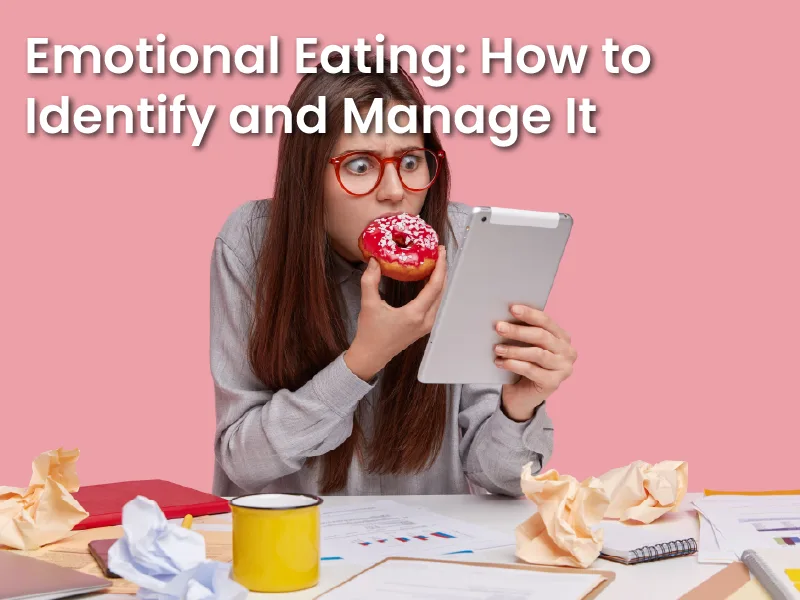
Emotional eating is more common than many realize. It’s a coping mechanism triggered by stress, sadness, boredom, or even happiness, rather than physical hunger. Understanding and managing this behaviour can help support both emotional and physical health. Always consult a medical professional before following any health advice or setting out a new health plan.
Understand What Emotional Eating Is
Emotional eating involves consuming food to cope with feelings like stress, boredom, sadness, or anxiety rather than physical hunger. Recognizing that food is being used as comfort instead of nourishment is the first step toward changing the behaviour and developing healthier coping mechanisms.
Recognize the Triggers
Common triggers include stress, loneliness, fatigue, or even celebrations. Emotional hunger is sudden, and urgent, and often crave specific comfort foods. Keeping a journal of what you eat and how you feel can help pinpoint the emotional patterns behind your eating habits.
Differentiate Between Emotional and Physical Hunger
Physical hunger builds gradually and can be satisfied with a variety of foods. Emotional hunger is sudden, often demands specific comfort foods, and persists even after you’re full. Learning this distinction helps prevent unnecessary snacking or bingeing.
Pause Before You Eat
When a craving hits, pause for five minutes and ask yourself if you’re truly hungry or trying to soothe an emotion. Practising this pause can interrupt the automatic response and give you time to make a conscious choice.
Find Non-Food Coping Strategies
Replacing eating with healthier emotional outlets—like journaling, walking, listening to music, or deep breathing—can ease emotional distress without food. Experiment to find what soothes you and build a go-to toolkit for emotional moments.
Practice Mindful Eating
Mindful eating involves slowing down, savouring each bite, and paying attention to hunger and fullness cues. It helps you become more aware of your body’s needs and prevents mindless eating, especially during emotional moments.
Avoid Keeping Trigger Foods at Home
If you often turn to chips, sweets, or processed snacks during emotional episodes, keeping them out of reach reduces temptation. Stock your pantry with nutritious, whole foods to encourage healthier choices when hunger strikes.
Build a Balanced Routine
Lack of sleep, skipped meals, or an overly restrictive diet can intensify emotional eating. Prioritize regular, nourishing meals, adequate rest, and consistent exercise to stabilize mood and reduce vulnerability to emotional cravings.
Seek Emotional Support
Talking to a friend, therapist, or support group can provide comfort and help process emotions more constructively. Therapy, especially cognitive behavioural therapy (CBT), is highly effective in treating emotional eating and improving self-regulation skills.
Be Kind to Yourself
Overcoming emotional eating takes time and self-compassion. Instead of guilt or shame after a slip, reflect on what triggered it and focus on learning. A kind mindset fosters progress and makes long-term change more sustainable.
Conclusion
Emotional eating can feel frustrating, but it’s a habit that can be managed. By learning to recognize triggers, finding healthier coping mechanisms, and seeking support when needed, you can build a more balanced relationship with food and your emotions. Always consult a healthcare provider before starting any dietary or emotional health plan.


